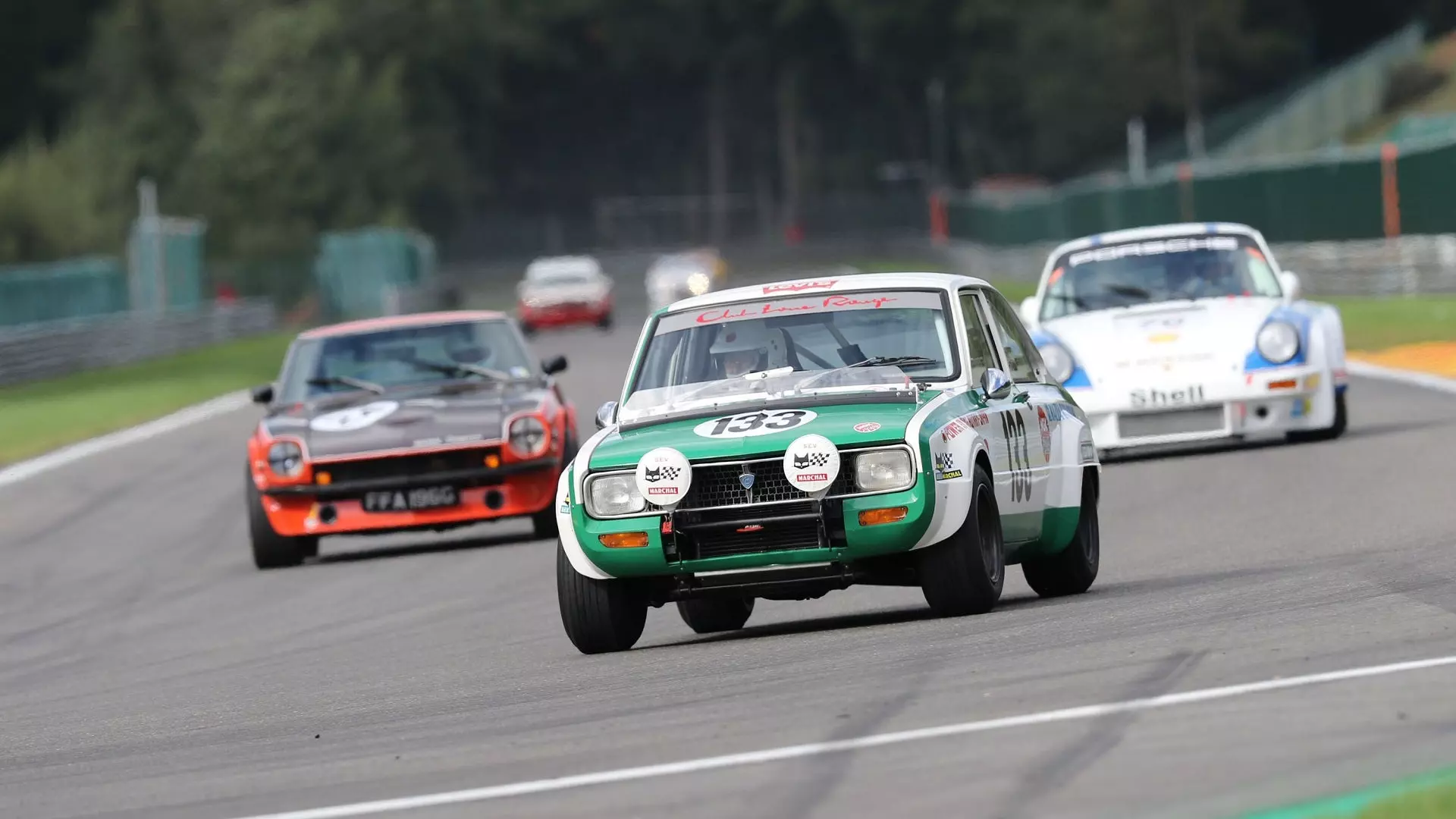Mazda’s history as the main purveyor of rotary engines in motorsports is full of cool underdog stories. RX-7s upset GT racing from the late ’70s to late ’80s, its prototypes kicked some ass in the late ’80s and early ’90s, and it screamed through the field in Grand Am GT racing in the late ’00s.
Strong David versus Goliath vibes across the board there; Mazda was always relatively puny in both financial resources and engine displacement. One of the cars that helped kick it all off for Mazda was a teeny coupe that barely made an appearance here in the U.S.: the R100.
Known to the Japanese domestic market as the Familia Rotary Coupe, the R100 took the Cosmo’s place in Mazda’s entry into motorsports in late-1968. This was a more mass-produced model in Mazda’s lineup, not a tiny niche sports car like the Cosmo. Being a slightly-less-tiny coupe that cost a bit less money made it a perfect racing platform.
Though Mazda had used the Cosmo to establish itself as competent in motorsports, it started casting its net wider to prove itself in more a mainstream series: touring car racing.
Making An Impression
After some early success racing the R100 throughout Asia in 1969, Mazda entered two in the 24 Hours of Spa in Belgium. This was the brand’s best chance to compete with the likes of Porsche, BMW, Alfa Romeo; all of the well-established names in all-things touring car and GT racing. Any kind of upset here would certainly be profound.
The rotary engine under little R100’s hood wasn’t just any rotary, it was the all-aluminum, twin-rotor 10A. That’s right, two rotors that made up a total one liter of displacement. Taxation in Japan was the reason for making such a small engine; 1.0-liter-or-less meant less tax for consumers to pay. But part of the rotary appeal, in theory, is that these engines using spinning, Dorito-shaped rotors can make more power than traditional piston engines of the same displacement.
As odd as the consumer version already was, this tiny engine’s racing variant differed quite a bit to make more juice. Mazda gave it peripheral-porting, which essentially means the intake ports were bored out to be much larger than stock. This doubled the factory power rating to 200 horsepower, in a platform that tipped the scale at around 2,000 pounds -not bad. Though, they were detuned to 178 HP for longevity during the grueling 24-hour race.
Mazda took fifth and sixth overall at the 1969 Spa 24-Hour with their R100s, immediately after four Porsche 911s. Think about that: the only cars to beat the little coupes overall were fully-fledged sports cars with more power, and in a higher class. Porsche was also well-established at that point, campaigning in a bunch of different classes and series across Europe. The fact that Mazda finished just behind them, and that other brands with established racing platforms couldn’t get the jump on the small Japanese brand, really meant something.
Thirsty For More
The following season in 1970, still high on giving the big dogs a good tanning at the previous year’s event, Mazda returned to the Spa 24 with four R100 entries.
This time it put on even more of an ambitious show; by hour 12, one of the R100s got past a BMW 2800CS, and the rest of the gang followed suit: they maintained first, third, fourth, and eighth for a good amount of the race. Though unfortunately by hour 18, after six-whole-hours of battling with the BMW for top position, the leading R100 was done; it suffered a mechanical failure and retired. Two other R100s reached a similar fate, leaving just one to rep the Mazda nameplate. The lone R100 finished fifth, unfortunately no higher than the previous year.
Despite this, Mazda actually achieved a lot of success. The show it put on during the grueling, wet (it seems to always rain during the Spa 24-hour) race made them a crowd favorite, and opened spectators’ eyes to the sorcery of the rotary engine. From then-on, racing fans in Europe referred to the R100 as the “Little Giant.” The buzzy little metal-bees-nest-looking powerplant proved it had no issue sparring with the traditional piston competition.
Some very-worn footage of the 1970 event is actually on YouTube. Check it out; it really conveys how stacked the competition was:
Why It Matters
In the grand scheme of things, two years’ worth of results usually doesn’t raise eyebrows. Especially when they aren’t of the podium-slaying variety. What matters in the Mazda R100’s case, is that Mazda replaced its beautiful Cosmo sports car with what was essentially an econo-coupe, and then proceeded to give the establishment a solid run for its money.
What makes this an underdog story, and a cool one at that, is that it’s one of a smaller manufacturer placing really well at the top tiers of competition considering its budget, resources, racing experience, and choice of unconventional power plants. Had Mazda actually gotten the chequered flag on that fateful day in 1970, imagine how much more of an upset it would’ve been?
This occasion is so significant for the brand, that a pair of R100s recently returned to Spa a few years ago to commemorate the experience.
Jin Kato, rotary enthusiast and amateur racer, brought them over from Japan to take part in the 2015 Spa Classic Race. Kato had been in possession of one of the R100s since the chassis’ racing heyday, how cool is that? After a few decades, some prep work to bring it up to modern racing safety spec, and meeting all the FIA requirements, it took to the tarmac to make its siblings proud.
The story that goes into depth about it over at MZRacing.jp is pretty fascinating, and check out the video below posted by the Belgian-Motorsport YouTube channel that highlights them on track and in the pits. The sight of these cool, fresh-looking vintage racers, and the wild rotary noises they produce, is really something to behold. These were only beat out by Porsche 911s in 1969.
Also, mildly related for some more modern context about the R100: scope out this video that Hoonigan AutoFocus recently posted about a bridge-ported 13B-swapped R100. A bridge-ported rotary has an additional, smaller intake port cut in the rotary housing for better flow. It sounds glorious.
The R100 is nowhere near as famous as the RX-7, or as well-known as Mazda’s 787B (which famously kicked ass at Le Mans) but is an important slice of rotary engine history, and a big hero in Mazda’s motorsport family tree.









